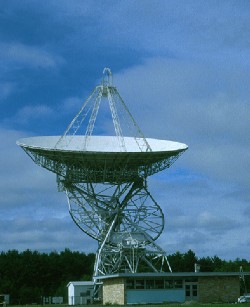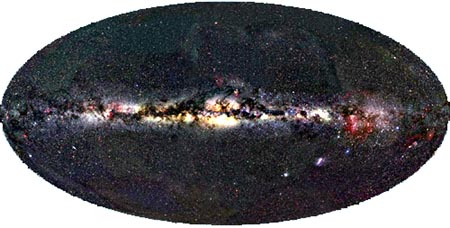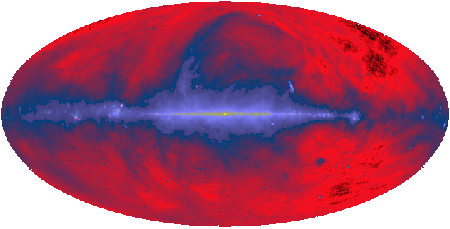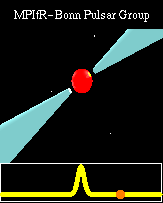Astronomy distance learning programme
For ten years from 2000 I was responsible for the development and delivery of a programme of part-time undergraduate distance learning courses in astronomy. The programme comprised four courses: Life in the Universe, Introduction to Radio Astronomy, Exploring the Radio Universe and Frontiers of Modern Astronomy.
E-learning methodologies, partly developed for these distance learning courses, have been applied to full-time on-campus courses. This includes setting up web-controlled radio and optical telescopes and computer-aided learning via applets. These developments are now featured in 1st year core astrophysics, 2nd year laboratory and 4th year projects.
Students
Over 10 years, 1300 students registered on modules in my astronomy distance learning programme at The University of Manchester. About 90% of these students were from the UK/EU, with the others based in countries across the world.
Course modules

In 1960, the 84-ft Tatel Telescope at Green Bank, West Virginia, was used by Frank Drake and colleagues to make the first SETI observations.
Life in the Universe: A 20-credit Level 1 course* providing an astronomical perspective on our cosmic origins from the big bang to the development of intelligent life and SETI. The syllabus includes a general introduction to astronomy concentrating on the origin of the chemical elements in the big bang, stars and supernovae; the formation of the solar system; the conditions necessary for life to develop; the search for life on other planets; the discovery of extrasolar planets; and SETI - the search for extraterrestrial intelligence.
* Note in the UK, 120 credits corresponds to one year of full-time undergraduate study. Level 1 corresponds to first year, Level 2 to second year.

Students pictured in front of the telescopes they use during the weekend visit.
Introduction to Radio Astronomy: A 10-credit Level 1 course focused around an opportunity to make your own observations of pulsars and galaxies using radio telescopes at Jodrell Bank. This is either during a weekend visit or remotely via the internet. Supporting course materials leading up to the observing sessions cover an introduction to radio telescopes and to these astronomical sources of radio waves.


The whole sky in visible light (top) and radio waves (bottom).
Exploring the Radio Universe: A 20-credit Level 1 course providing a thorough study of the universe as seen through the radio window. Deeper and more wide-ranging than the Introduction to Radio Astronomy, this course includes a broad overview of radio telescopes & receivers and the techniques of radio astronomy. Practical sessions include using our 6.4-metre telescope via the internet and analysing data from other radio telescopes including the 76-metre Lovell Telescope in a dedicated observing session.

Animation of a pulsar, a rotating neutron star with twin beams.
Frontiers of Modern Astronomy: A 20-credit Level 2 course providing an in-depth look at some of the current research interests of astronomers at Jodrell Bank. The course covers several topics in detail - stellar explosions, pulsars, gravitational lenses and the cosmic microwave background. This course is at level 2. This means applicants should have knowledge of basic general astronomy e.g. lives & deaths of stars, HR diagram, galaxies and the expanding universe, basic ideas about the big bang etc. This could be through formal qualifications, for example our Life in the Universe course or one offered by our colleagues at other universities. It could also be through prior experience, for example active membership of an astronomy society, attendance at astronomy evening classes etc. Our Introduction to Radio Astronomy is not sufficiently general to count in this regard.
Assessment & support
Students are assessed by a range of methods including: written assignments testing their knowledge of the notes provided over the internet via a virtual learning environment (Blackboard); by a report on their telescope observations; and by time-limited open book tests delivered over the internet.
Tutorial assistance is available by telephone, email and a web- based discussion forum which forms a student community.
Web-controlled radio telescope
To support the courses we also developed a web interface to our 6.4 metre radio telescope. This enabled students who could not visit for the weekend to use the telescope to carry out experiments on the beam of a radio telescope, the hydrogen line and the structure of the Milky Way galaxy.
This web interface now enables our full-time undergraduate students to conduct experiments from the second year laboratory in Manchester. In their third year, the students then visit Jodrell Bank to use the telescopes.
The 6.4-m telescope has also been used with schools, notably as part of the Excitement of Science programme run in conjunction with the Rotarians and the Royal Institution. Around 100 schools nationwide were given access to the telescope over the internet to conduct a number of experiments from the classroom. This included mapping the plane of the Milky Way galaxy. The project concluded with an event in the iconic Faraday Lecture Theatre of the Royal Institution in London.
The telescope has also been used as part of the EU Hands-On Universe project and is now being developed for use by school groups visiting Jodrell Bank Discovery Centre.
Collaboration between universities
This programme included the development of a collaborative Certificate in Higher Education in Astronomy and a Certificate in Astronomy by Distance Learning working with the Open University, Liverpool John Moores University and the University of Central Lancashire – students were able to study for course units at each of the universities which then counted via credit transfer to the award for which they were registered.